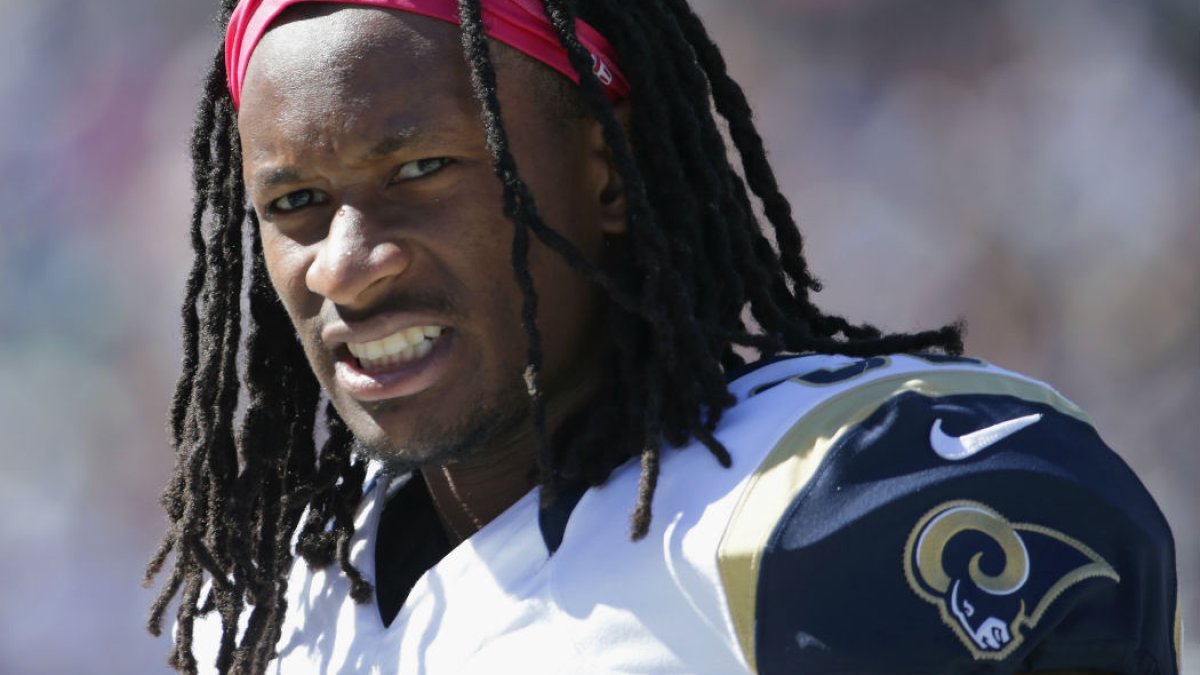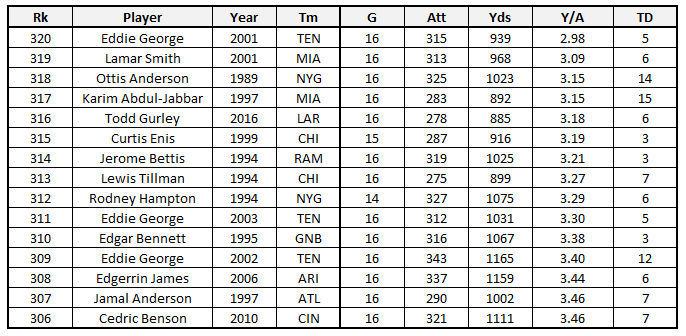(“Metrics that Matter” is a short feature that appears every weekday, highlighting a notable fantasy lesson to be learned from PFF’s advanced stats.)
As I said in Thursday’s installment, I spend the majority of my day uncovering unique stats to paint a picture about a specific player. I especially love doing this when that player is a highly-polarizing one. I suggested yesterday(link) that Colin Kaepernick might be the most polarizing player in football in terms of which side of the debate you fall (he’s a distraction and not worth a job, or he’s a starter-level talent being blacklisted.) This was possibly true, but if not for Kaepernick, the crown might actually belong to Todd Gurley.
Gurley has become one of the most-debated players this offseason. Either he’s a generational talent in a bad situation due for a monster bounceback year, or he’s the next Trent Richardson. There seems to be no in between. Except that, when asked for my opinion on his fantasy value, to everyone’s disappointment, I am somewhere in between. But today, I did do that thing I do, where I uncovered some unique statistics that help explain what went wrong and why he might still be a fantasy value.
Join PFF Elite for access to PFF Signature Stats across all positions.
In 2015, among all running backs with at least 150 carries, Todd Gurley had the highest percentage of runs to go for 25 or more yards (8 of 229.) In 2016, he ranked dead-last by this same metric with zero runs of 25 or more yards on 278 attempts.
In 2015, 32.9 percent of his Gurley’s rushing yardage came from runs of 25 or more yards — the highest rate in the league. Gurley ranked eighth-best in yards per carry (4.83) that season, but if we take away all of his carries of 25 or more yards, he would have ranked last in the NFL (3.36.)
This is surely a main culprit for Gurley’s disappointing 2016 season, but I’m not sure why this is the case. Let’s dig a little deeper into his numbers.
Since Week 9 of 2015, Gurley leads the NFL in carries, but ranks last of all 31 running backs with at least 200 carries over this span in yards per carry (3.43.) During this timeframe, there were 135 instances of a running back totaling 100 rushing yards or more in a game, with Gurley accounted for just one. For perspective, Jordan Howard (13 starts) and Ezekiel Elliott (15 games played) accounted for seven each. This is really not good.
But wait, it gets worse!
In the entire history of the NFL, there are 320 instances of a running back accumulating at least 275 carries in a single season. Among these 320 seasons, Gurley’s 2016 season ranks fifth-worst in yards per carry.
So, that’s the bad news. The good news, if we can call it that, is that four of the 12 worst seasons came from a running back coached by Jeff Fisher. This is likely not a coincidence. I’ve said some very unflattering things about Fisher in articles before, but my editor, keep-me-from-offending-people mage that he is, always takes them out. Just know that I am very much not a fan, and do think his departure means good things for Gurley.
What does this mean for fantasy?
I broke down running backs by a number of unique metrics earlier in the offseason. Gurley was not at a serious disadvantage when it came to strength of schedule or stacked boxes. He was, however, hurt by a poor offensive line. Last season, Los Angeles ranked fifth-worst in yards before contact per attempt, suggesting his offensive line didn’t give him very much room to run. I’m optimistic that this improves with the arrival of Andrew Whitworth – who ranked among our six-highest-graded offensive tackles in run blocking in two of the last three seasons. Director of PFF Fantasy Jeff Ratcliffe shares my optimism and broke down the significance of the signing here.
While I’m excited about Fisher’s exit and the improvement of the offensive line, I’m still concerned by Gurley’s lack of efficiency, tough 2017 schedule, and likely reduction in target volume. I’m not sure he’ll break off as many long runs as he did in 2015, but I am optimistic for an improvement on his 2016 season. Gurley leads the league in rushing attempts since his first NFL start, and should again see a high rushing workload, but is a much less-attractive option in PPR leagues (in part because the Rams brought in pass-catching back Lance Dunbar this offseason). I’m fine taking him in the late second of standard leagues, but will likely wait a full round in PPR leagues.




 © 2025 PFF - all rights reserved.
© 2025 PFF - all rights reserved.